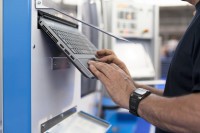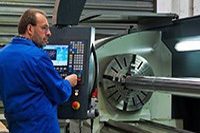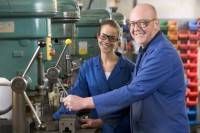Rapid Prototyping and Design
Certificate - 14 credits
Delivery Method: On-Campus
Overview
As a child, did you ever imagine making something appear out of thin air? Something amazing! A toy you really wanted? Your own convertible, perhaps? Learn 3D printing, rapid prototyping and design and make your dreams a reality! The rapid prototyping and design certificate at Lake Superior College in Duluth, MN is a great way to enter an exciting and emerging field. Design, manufacture and test 3D models of ideas or parts. 3D printing and other rapid prototyping methods are much faster and more flexible than traditional manufacturing methods.
Career Information
Visit the U.S. Bureau of Labor Statistics, the MN Dept of Employment & Economic Development, and the Occupational Information Network (O*NET) to gather valuable career information such as wage reports, career outlook, job prospects, industry trends, and career opportunities. These tools are available to help empower students to make informed decisions about their educational and professional paths.
Below you will find the Career Field and Career Cluster that this program is related to. Learn more about if this career area fits your interests!
Is Manufacturing right for you?
Manufacturing workers work with products and equipment. You might design a new product, decide how the product will be made, or make the product. You might work on cars, computers, appliances, airplanes, or electronic devices.
Plan Your Education
The Program Guide is a tool to help you map out how to successfully get your degree at Lake Superior College.
Program GuideView approximate total tuition and fees for MN residents to complete this degree.
Tuition and FeesThis program may be completed with 14 credits if pre-program requirements are met.
Skills & Knowledge
- Learn how to create prototypes of existing mechanical components
- Analyze, inspect, measure and test an existing mechanical component
- Produce computer-aided drawing and assembly
- Select proper prototype process
- Create prototype of product using prototyping equipment including 3D printers
- Make changes in models to achieve a working product
Related Degrees
Integrated Manufacturing Programs Machine Tool Programs
- Automated Machining (CNC) Certificate - 16 credits
- CNC Programmer – Machine Technology Associate of Applied Science (AAS) - 71 credits
- CNC Programmer – Machine Technology Diploma - 64 credits
- Engineering Technology Associate of Science (AS) - 60 credits
- Manual Machinist Certificate - 30 credits
- Production Technologies (16 credit) Certificate - 16 credits
- Production Technologist (8 credit) Certificate - 8 credits








